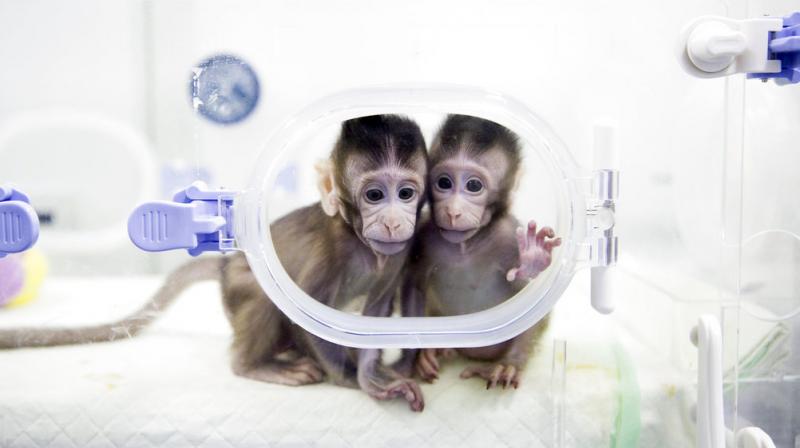Clone Monkeys
March 30, 2018
Countless hours spent grueling on a single goal. Replication. Chinese scientists took an enormous step in the direction of human cloning. Monkeys are the closest species to humans, and share 99.8% of DNA, according to the American Museum of Natural History. So cloning primates is no easy feat. Although, cloning has been done in the past, cloning this close of a relative is a big step for technology and cloning humans. Cloning has been successfully done, including cases such as Dolly the Sheep in 1999, and frog embryos that date all the way back to 1951.
“Personally I think cloning is a scary thought.” says Jonny Kleppinger, a sophomore at Fruita. Although the idea of cloning can be scary, and sounds more like a science fiction film, replication of living things is a long, extensive project. The first process of cloning a complex species can be seen in 1963, where a Chinese scientist named Tong Dizhou cloned a male Asian Carp, which are common fish in Asia, and created another carp that could do the basic functions including swimming, eating, and reproducing.
The next large step was in 1981, where scientists from Switzerland cloned 3 mice. This was another signicificant step de to the fact that they were the first mammals.
The monkey cloning process was however, much more extensive. According to NBC news, it took 127 eggs to produce the 2 live monkeys. The scientists had to use modulators to switch certain genes on and off. Using the same technique they used on Dolly the Sheep, a process called Somatic Cell Nuclear Transfer, or SCNT for short, made it possible to replicate the two monkeys.
The monkeys, named Zhong Zhong and Hua Hua, have also reached a landmark in science. They were the first mammals to ever be replicated from a non-embryonic cell. The longer, more proper name, non-embryonic stem cells are very useful. Stem cells as a whole have paved the way to developing cures for diseases such as cancer. Stem cell transplants can help with cancers such as Leukemia, which is a cancer of the blood. Some stem cells can be pulled from embryos, which make them embryonic stem cells. These type of cells can help in developing any type of cell. However, the removal of stem cells kills the embryo, making it a highly controversial topic. Non-embryonic stem cells however, can be found in large numbers in many places, such as tissues, organs and bone marrow. The removal of these stem cells is much safer and are used to perform procedures, such as previously stated leukemia treatment. While embryonic stem cells have extremely high plasticity, non-embryonic ones have a mediocre plasticity. Plasticity is the ability something has to make a shape or be molded.
Although clone monkeys or other animals may not be nearly as cool as the idea of flying cars, this paved the way to human cloning and other advances in science.
